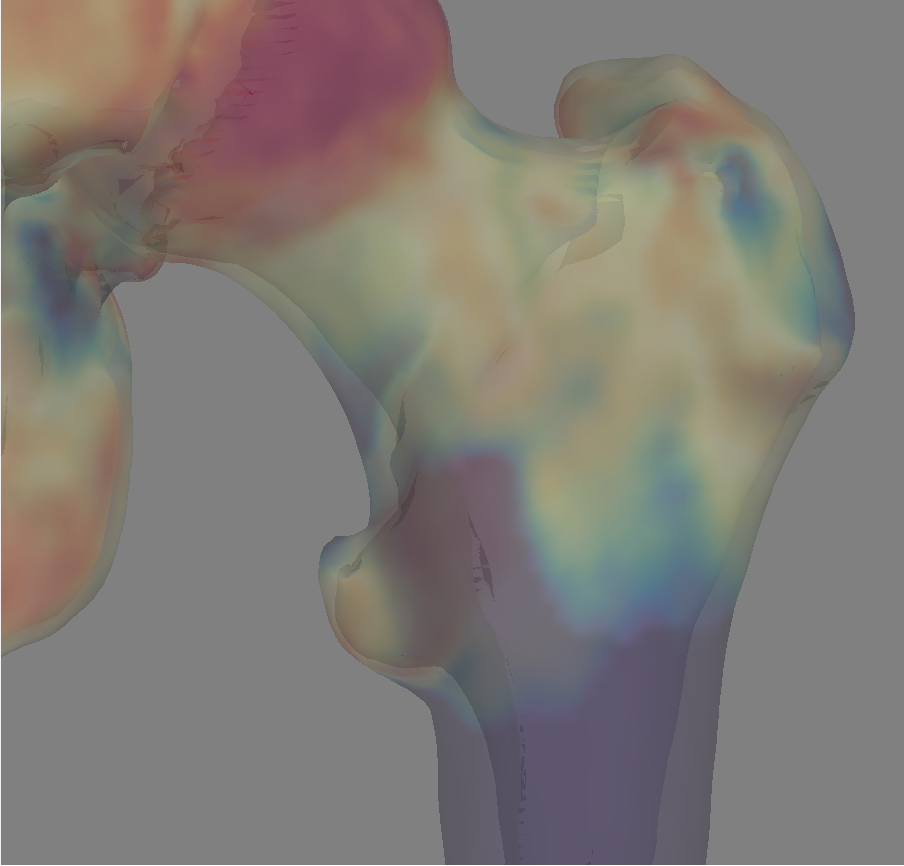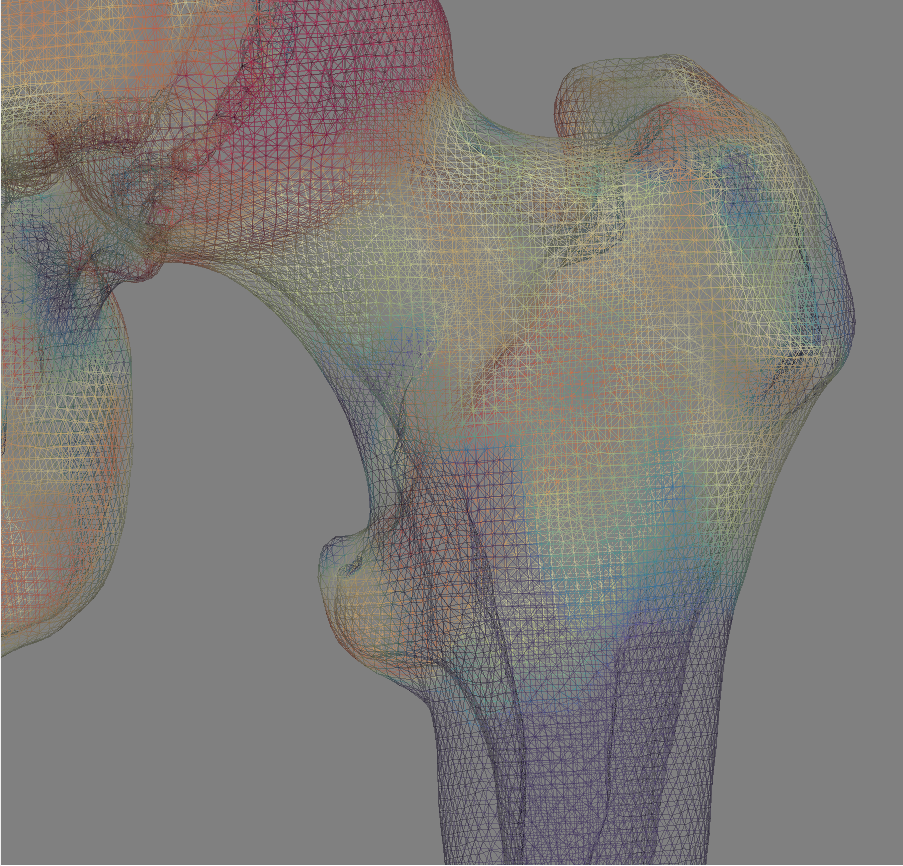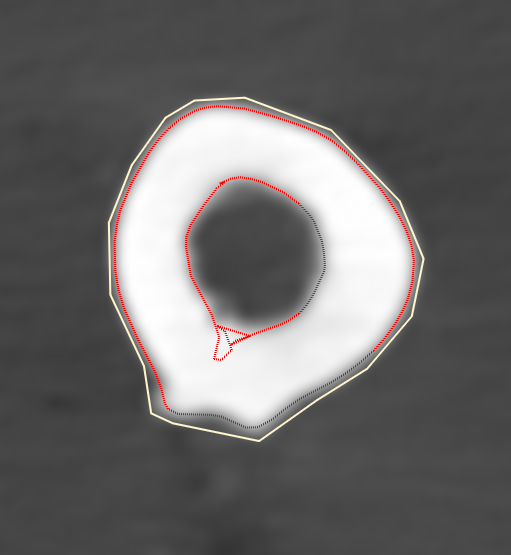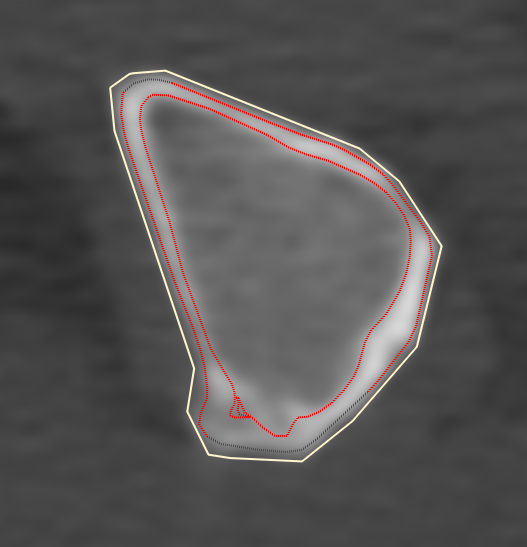Main > GMT_4YP_18_1
Dr Graham Treece, Department of Engineering
F-GMT11-1: Complex variable thickness bone cortices from CT data
 |  |  |  |
| We already have a technique which can measure the bone cortex very precisely, and create inner and outer surfaces, based on thickness measured in the direction of the outer surface normal. The colour shows thickness from 0 to 4 mm. | Both surfaces are made out of the same distribution of triangles, but in different locations. In regions of higher curvature the inner surface can hence self-intersect. | This is easier to see in a 2D cross-section: the red lines show the inner and outer surface locations, the red scribble at the bottom is the issue. | Can this issue be solved by picking the measurement directions more carefully so the inner surface locations don't overlap when the inner surface is formed? |
Bone fracture is a major issue affecting millions of people annually, and we have recently been involved in research which has the potential to contribute significantly to both our understanding of fracture and how various preventative measures affect bone. The advances have come from a much more precise (and hence much more sensitive) measurement of the bone cortex (the denser layer surrounding the less dense bone in the middle). As well as contributing to our understanding of fracture, this technique is also being used to underpin models of bone used in mechanical analysis, for instance to see what happens to the skull during a head injury. It is also increasingly being used by paleo-anthropologists who are interested in the properties of very old bones.
The existing technique measures bone in the direction of the outer surface normal, and forms an inner surface by offseting all the triangles in the outer surface along this direction. If the bone surface is complex or highly curved, these measurement directions can overlap, and hence the inner surface will also self-intersect. The aim of this project is to try to modify the measurement
direction locally so that the inner surfaces never self-intersect and good measurements can be made everywhere, resulting in a cortical surface which is of much higher quality, both for display and for further analysis. This is an interesting problem in computational geometry, related to variable-thickness offset surfaces.
This is an algorithmic development / computational geometry / software project, so experience of writing software is essential, though the development could also be done using Matlab.
Click here for other medical imaging projects offered by Graham Treece.
